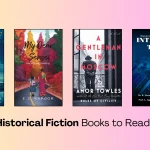Writing around a campfire blends the age-old art of storytelling with the peaceful atmosphere of nature, making it a singular and rewarding experience. This you an opportunity to unleash your creativity in a motivating setting, free from everyday interruptions. Regardless of your writing experience level, these pointers will enable you to get the most out of your campfire writing sessions.
Understanding the Basics of Campfire Writing
What is Campfire Writing?
Writing poetry, fiction, and other types of writing while seated around a campfire is known as “campfire writing.” It finds inspiration in the surrounding environment and in the ancient human custom of telling stories by the fire.
Why Campfire Writing is Unique
The distinctive quality of Campfire Writing is its emphasis on shared storytelling and teamwork, which sets it apart from most other writing forms. By using this technique, several authors can contribute to a single story, resulting in a dynamic and ever-evolving tale.
In real time, participants build on one other’s ideas, which fosters creativity and spontaneity. It’s an enjoyable and interesting experience since Campfire Writing is interactive and encourages a sense of community among writers. It may also result in surprising character arcs and plot turns, giving the story a deeper, more varied quality.
What distinguishes Campfire Writing from more conventional, lonesome writing techniques is its group approach.
You may also read: Kindle Cloud Reader 101: What It Is and How You can use it.
Preparing for Your Campfire Writing Session
Choosing the Right Location
Finding a Quiet Spot
Effective campfire writing requires finding a quiet place to write. To cut down on distractions, choose a location distant from busy routes and boisterous campers.
The ideal atmosphere for creation can be created in a quiet spot next to your bonfire. A serene backdrop might be created by neighbouring streams or trees in the natural environment.
Make sure your campfire writing is in a safe location where it won’t disrupt nearby wildlife or other campers. Your writing sessions around the campfire will be more pleasurable and fruitful if you can concentrate and feel inspired in this peaceful environment.
Considering Safety
When choosing a location for campfire writing, safety must be taken into account. To start with, choose a spot far from flammable objects like dry grass and overhanging trees.
Make sure there are no potentially dangerous animals in the neighborhood. Additionally, it’s critical to keep water and a fire extinguisher close by in case of emergency.
To prevent mishaps, make sure the ground is level and stable. By giving these safety precautions top priority, you provide a safe space where you can concentrate on your campfire writing without fear.
You may also like: How to Write a Book Blurb: Essential Guide
Gathering Your Materials
Essential Writing Tools
Obtain the necessary supplies to ensure a productive and pleasurable experience if you want to succeed at campfire writing. Start with a good notepad and dependable pens so you can write down your ideas uninterrupted. When traveling at night, carry a small, weatherproof lantern or headlamp for good visibility.
For comfort, think about getting a lap desk and portable chair. Bring a thermos of hot beverages with you to remain warm and concentrate. Having a sturdy, lightweight rucksack will aid in keeping things organized.
The secret to improving your campfire writing sessions and making sure you stay comfortable and motivated while working outside is to have some basic but useful supplies.
Comfort Items
It might be quite helpful to have comfort goods ready when writing by the campfire. These include soft blankets, plush chairs, and maybe a special cup for warming beverages. Having these things with you helps to establish a calm atmosphere, which facilitates writing concentration.
For adequate lighting, think about bringing a headlamp or lantern. Additionally, remember to bring bug repellent to ward off bugs. Having these comfort goods at your disposal will make it easier for you to enjoy your writing session around the campfire and continue working through the night.
You may also like: Why Professional Book Editing is Essential for Self-Publishing Success
Setting the Mood for Creativity
Creating a Cozy Atmosphere
Using Lighting to Your Advantage
For campfire writing to be effective, lighting must be good. Use soft, warm lighting that resembles the glow of a campfire to create a cozy mood. Your writing area can be made to feel cozy and welcoming by adding candles, string lights, and lanterns.
These lighting solutions not only assist create a calming atmosphere but also offer sufficient illumination to see your writing. Steer clear of strong, glaring lights as they can ruin the cozy atmosphere. You may improve the quality and productivity of your campfire writing sessions by using the appropriate lighting.
Incorporating Nature Sounds
By fostering a warm atmosphere, adding sounds of nature can improve your experience writing by the campfire. You can become lost in a tranquil, natural environment when you hear the soft rustle of leaves, the chirping of crickets, and the distant hoot of an owl.
You can write more effectively and enjoyably when you use these noises to help you unwind and concentrate. If you’re not in a natural environment now, think about employing applications or recordings of natural noises.
This small adjustment can go a long way towards improving your writing immersion and capturing the spirit of the outdoors even when you’re not sitting by the campfire.
Managing Distractions
Technology Detox
Technology detox is essential for effective campfire writing, as it helps writers manage distractions and focus on creativity. Campfire writing encourages disconnecting from digital devices to immerse oneself fully in the natural surroundings and the storytelling atmosphere.
A technology detox involves taking a break from smartphones, tablets, and laptops to reduce screen time and mental clutter. This break allows writers to recharge their creativity by observing nature, engaging in meaningful conversations, and finding inspiration in the tranquility of the outdoors.
By incorporating regular technology detox sessions into their routine, campfire writers can maintain a clear mind, enhance their storytelling skills, and produce more authentic and compelling narratives.
Mindfulness Techniques
It’s crucial to practice mindfulness to control distractions, especially when writing by the campfire. Writers can prevent daydreaming and stay in the present moment by using techniques like focused breathing. Body scan meditation is an additional useful technique for writers.
It involves mentally focusing on every region of the body to relax muscles and cleanse the mind. Writers can be more creative and productive around the campfire by practicing mindfulness, which helps them stay focused.
These methods encourage a focused and relaxed state of mind, which is perfect for creating high-quality material while enjoying the outdoors.
You may also like: Top 10 Historical Fiction Books to Read in 2024
Developing Your Campfire Story
Choosing a Compelling Theme
When it comes to writing for campfires, picking an engaging theme is essential. Your topic should be able to captivate your audience from beginning to end in the same way that stories around a campfire writing do. Your story’s tone and direction are determined by the theme, which might be anything from adventure to mystery to friendship.
Consider the feelings and concepts you wish to arouse in your audience among the twinkling stars of the night. Having a compelling theme for your campfire writing story guarantees that it will stick in the minds of those gathering, making it enjoyable and unforgettable.
Building Backstories
When writing campfire stories, where the narrative revolves around the flickering flames, developing backstories is essential. Listeners find characters and situations more compelling when they have a past because it gives them depth.
Commence by providing essential information about your characters’ pasts, such as their upbringing or life-changing events. To evoke sympathy and suspense, mention their goals and difficulties.
You can hold the attention of your audience and create a campfire tale that they will remember long after the fire goes out by incorporating these components into your story.
You may also read: Famous Science Fiction Books to read in 2024
Writing Techniques for Campfire Stories
Using Vivid Descriptions
Using vivid descriptions to captivate your readers and establish a fascinating mood are key components of effective campfire writing. You may immerse listeners in your story and give them the impression that they are experiencing the events directly by using words to construct vivid pictures.
Give a detailed description of the sensations, such as the warmth of the glowing embers, the whispering of the wind through the trees, and the crackling of the fire.
Your campfire writing will have a greater effect and maintain everyone’s attention throughout the evening thanks to these evocative descriptions that not only set the scene but also heighten it.
Balancing Dialogue and Narrative
Finding the right mix between conversation and story is essential for drawing in listeners while writing campfire stories. This essential campfire writing style alternates between descriptive passages that set the mood and create tension and spoken dialogues that give characters life.
Storytellers can use dialogue to develop the plot and reveal characters, while narrative descriptions set the scene and elicit feelings from the audience. These components are expertly incorporated by campfire writers to hold readers’ attention throughout the story.
Building Suspense
During campire writing, creating tension is essential to keeping readers on the edge of their seats. Build suspense and progressively expose details to accomplish this. Begin with an enigmatic location or a character who is up against unidentified threats.
To create a clear image and appeal to the senses of sight, sound, and even smell, use descriptive language. By skillfully pacing the narrative with pauses and tone shifts, you can heighten tension.
This makes the story exciting and memorable by keeping the listener interested in hearing what will happen next.
You may also like: List of Nobel Prize Winners in India(Updated)
Editing and Refining Your Story
Self-Editing Tips
Self-editing is essential to polishing your story while writing for a campfire. To get a new viewpoint, start by pausing after writing. To identify mistakes or difficult wording, read your work aloud. Prioritize simplicity and clarity, and make sure that every sentence advances the plot of your novel.
Check for proper grammar and punctuation by using resources such as spell checkers. For a seamless story that draws others in around the campfire, eliminate superfluous words and make your sentences more concise.
Using Editing Tools
Using editing tools when writing campfire stories can greatly improve your storytelling. By enhancing clarity, refining your text, and fixing syntax, these tools assist you in honing your story. Grammar checkers and other similar tools make sure your work is polished and businesslike by pointing out mistakes and suggesting fixes.
Style checkers also provide advice on how to improve the coherence and engagement of your narrative. You may make sure that your campfire stories enthrall your audience with concise, captivating storytelling by using these editing tools
Sharing Your Campfire Story
Platforms for Sharing
There are many other platforms where you can share your stories around the campfire and interact with different audiences. You can swiftly reach a large audience on social media sites like Facebook, Instagram, and Twitter by using posts and hashtags associated with your campfire writing.
Longer tales and thoughts on your outdoor experiences can be found in more detail and with more customisation on blogs and personal web pages. Interactive areas for sharing, getting comments, and interacting with other campfire writers are offered via online forums and storytelling communities like Reddit or specialty groups.
Building a Community of Campfire Writers
Making connections with people who are passionate about sharing stories by the fire is the first step towards creating a community of campfire writers. It entails setting up a welcoming space where people may exchange tales from their campfires, gain knowledge from one another, and collaborate to get better at writing.
These get-togethers, which can involve storytelling under the stars or taking part in writing workshops, encourage creativity and friendship. Campfire authors can improve their stories and enthral their audiences by exchanging ideas and criticism, which will make each storytelling session around the fire more interesting and unforgettable.
Conclusion
Writing beside a campfire is an amazing opportunity to connect with the natural world and let your creativity run wild. You may improve your writing skills and produce engaging stories that connect with your audience by using the advice in this article. So grab your supplies, locate a comfortable location by the fire, and unleash your creative energy.
















